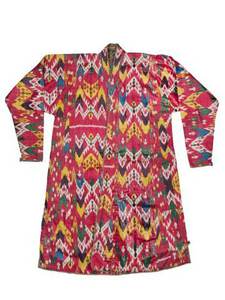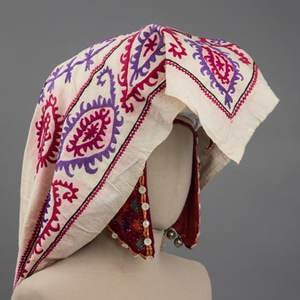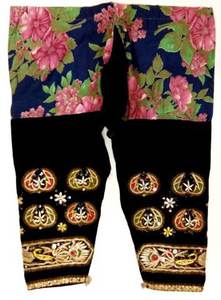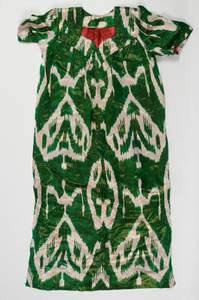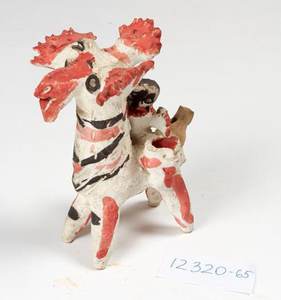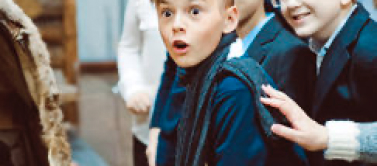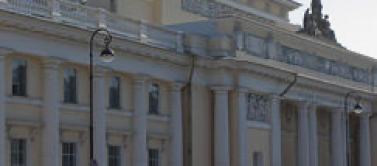Collections on the Central Asian peoples’ culture

The total size of the collection on peoples of Central Asia and Kazakhstan is about 22,200 objects. The basic time frame of the Central Asian collection is early 19th to early 21st century. Some artifacts, like weapons, jewelry, carpets, and copper utensils, are dated 18th century.
The basic time frame of the Central Asian collection is early 19th to early 21st century. Some artifacts, like weapons, jewelry, carpets, and copper utensils, are dated 18th century.
The collection’s geography is vast and covers plain agricultural oases (Khoresm, Bokhara, Samarkand, Fergana/Tashkent, Ahal, Merve etc.), alpine husbandry zones (Darvaz, Karategin, Pamir etc.), and areas of pastoral nomadism – desert (Kyzylkum, Karakum, Ustyurt), steppe (Kazakh Upland) and mountainous (Tian Shan, Pamir-Alay).
The collection comprehensively characterizes the regions folk culture; the largest groups of artifacts are garments (decorations included), home decor, utensils, and artisan implements.
The first Central Asian collection (No. 5) included Turkoman things displayed at the 1900 Paris Exposition. The first collector of Central Asian collections was S. M. Dudin who made three trips to the region in 1900–1902. Their result was the acquisition of about 5,000 household objects, 2,000 architectural glazed tiles and archeological artifacts, and 2,000 photographs. This at once made the Central Asian collection of the Russian Museum’s Ethnographic Department (ED) the largest in the world. Its peculiarity is not only thematic amplitude, but also the high artistic level of most items. Dudin’s photos are recognized as masterpieces of the world’s ethnographic photography.
In the next decade, S. M. Dudin’s collections were made up with Kazakh acquisitions, of which the most important were A. N. Beketov’s acquisitions (No. 1062) including a yurt with its décor, various kinds of utensils, and clothing sets.
Among the first valuable objects offered by private persons were a Kazakh door for a yurt with bone onlays, Kazakh wedding headgear, Uzbek and Kazakh cold arms, Uzbek and Tajik embroidered coverlets etc.
In the 1920s, under the programs of studying the USSR regions, ED employee F. A. Fielstrup formed collections on the Kirghiz and Kazakhs, and correspondent A. L. Melkov, on the Karakalpaks; most items in these collections have remained isolated rarities. The Turkoman collections of D. Yomudskaya were a valuable donation to the Museum. A special place in the collection was occupied by elite Uzbek artifacts (weapons, ceremonial costumes, horse trappings, silk fabrics, and embroidered curtains) received in those years from the State Museum Fund. They were presented by the last Emirs of Bokhara to Alexander III and Nicholas II as diplomatic gifts.
In the 1930s, special attention was given to products of artisans’ cooperatives were the new Soviet art was born. Employees of the Central Asian Ethnography Department purchased Turkoman carpets with portraits of statesmen, Tajik and Uzbek fabrics, and Kirghiz decorative machine embroideries.
In the collections of the former Museum of the Peoples of the USSR handed over to the Museum in 1948, the most valuable were costumes of the 1867 Ethnographic Exhibition and later exhibitions of the imperial period.
In the 1950-80s, the Museum’s personnel conducted intense field acquisitions in each of the Central Asian republics, which was related to exposition building, in particular setting up long-term exhibitions on modern dwellings, clothing, and applied art. The Turkoman acquisitions were supervised by A. S. Morozova, Kirghiz by S. M. Leikina and S. I. Ilyushenko, Uzbek and Tajik by M. D. Perlina and T. G. Yemelyanenko, and Kazakh acquisitions by A. V. Konovalov and A. B. Kunanbaeva. In that period, the Museum received the first collection on Central Asian Arabs (B. Z. Gamburg), and a large collection on Pamir tribes (B. Z. Gamburg, E. G. Tsareva). A most important correspondent’s acquisition was the unique Karakalpak collection compiled by artist I. V. Savitsky.
From the 1990s on, thanks to the expedition acquisitions of T. G. Yemelyanenko and acquisitions of Tashkent’s collector V. V. Kucherov, the Bocharan Jews depository has been formed. V. V. Kucherov also greatly contributed to making up the collections on the Uzbeks, Tajiks, southern Kirghiz (women’s decorations, garments, interior items, horse trappings etc.). In the 2000s, correspondents G. Kholmuhamedova and O. Tulabayev purchased for the Museum a large series of Tajik embroideries of the mid-20th century. In the 21st century, expedition acquisitions were made by the Museum’s employees T. G. Yemelyanenko (Uzbekistan), L. F. Popova (Kazakhstan, Kirghizstan), and O. V. Starostina (Kirghizstan, Tajikistan). Part of these acquisitions were present-day artifacts characterizing the development or interpretation of archetypal folk traditions. From private persons, the Museum most often purchased Turkoman carpets of the 19th-20th century, Uzbek and Tajik ceramics, and garments. Among the latest acquisitions are souvenir products conveying ethnicity at the symbol and image level.

